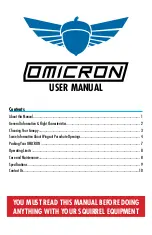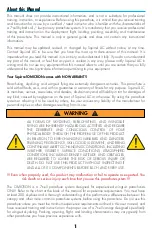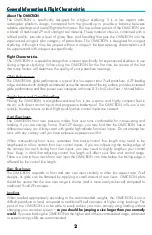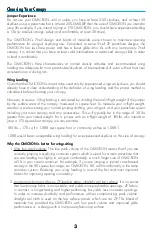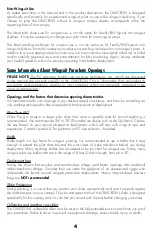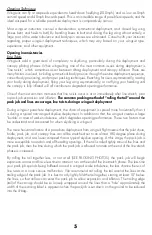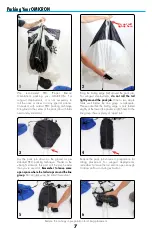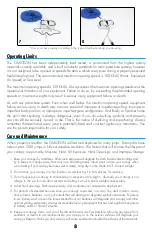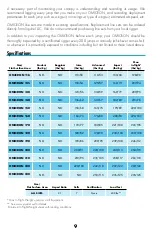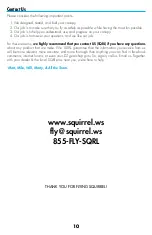
Stow your lines properly according to the type of deployment bag you are using.
7
8
8
Operating Limits
The OMICRON has been independently load tested, is constructed from the highest quality
materials currently available, and is built to industry-standards for main parachute systems; however
it is not designed to be opened at speeds far above which are typical during a properly executed
freefall deployment. The recommended maximum opening speed is 100 KEAS (Knots, Equivalent
Air Speed) at Sea Level.
The maximum opening speed is 120 KEAS. Always respect the maximum opening speeds and the
operational limitations of your equipment. Failure to do so, by exceeding the placarded opening
speeds or maximum weights may result in serious injury, equipment failure, or death.
As with any parachute system: Even when well below the maximum opening speed, equipment
failure, serious injury, or death may occur as a result of improper or imperfect packing, improper or
imperfect body position, or improper or imperfect gear configuration. And finally, to hammer home
the point that skydiving is always dangerous, even if you do everything perfectly and properly
you can still be seriously injured, or die. That is the nature of skydiving and parachuting. Always
remember that each and every jump is potentially fatal, and constant vigilance is mandatory. You
are the person responsible for your safety.
Care and Maintenance
When properly cared for, the OMICRON will last most skydivers for many jumps. Team pilots have
taken it past 1500 jumps in fully serviceable condition. The factors that will shorten the lifespan of
your canopy are primarily Moisture, Heat, UV Exposure, Hard Openings, and Improper Storage:
1. Keep your canopy dry at all times. All moisture exposure will degrade the cloth. Avoid water landings, and
try to keep your canopy away from moist or wet landing areas. Never pack or store your canopy when
wet or damp. If your canopy becomes wet or damp, hang dry it in the shade, NOT in direct sunlight.
2. Do not store your canopy in a hot location. Avoid leaving it in hot vehicles, for instance.
3. Do not expose your canopy to unnecessary or excessive UV/sunlight – obviously your canopy is not
allergic to the sun, but we don’t recommend letting it sit out in direct sunlight unnecessarily.
4. Avoid hard openings. Pack appropriately, and moderate your airspeed at deployment.
5. For periods of extended non-use, store your canopy unpacked, in a cool, dry, dark location, away
from solvents, batteries, or any chemical that will damage or degrade synthetic materials. Exposure
to car battery acid or even the fumes emitted from car batteries will degrade your canopy and other
nylon skydiving equipment. Always discard/destroy any equipment that has had significant exposure
to battery acids or harmful solvents.
6. Keep your canopy clean, and out of the dirt and dust as much as possible. Allowing any type of dirt,
sediment, or debris to accumulate inside your canopy or on the exterior surfaces will degrade your
canopy’s lifespan. Packing a dirty canopy will cause sediment to abrade the surfaces of the materials.

